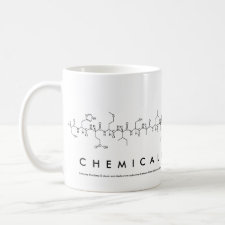
Authors: Figueiredo L, Erny GL, Santos L, Alves A
Article Title: Applications of molecularly imprinted polymers to the analysis and removal of personal care products: A review.
Publication date: 2016
Journal: Talanta
Volume: 146
Page numbers: 754-765.
DOI: 10.1016/j.talanta.2015.06.027
Alternative URL: http://www.sciencedirect.com/science/article/pii/S003991401530076X
Abstract: Personal-care products (PCPs) involve a variety of chemicals whose persistency along with their constant release into the environment raised concern to their potential impact on wildlife and humans health. Regarded as emergent contaminants, PCPs demonstrated estrogenic activity leading to the need of new methodologies to detect and remove those compounds from the environment. Molecular imprinting starts with a complex between a template molecule and a functional monomer, which is then polymerized in the presence of a cross-linker. After template removal, the polymer will contain specific cavities. Based on a good selectivity towards the template, molecularly imprinted polymers (MIPs) have been investigated as efficient materials for the analysis and extraction of the so called emergent pollutants contaminants. Rather than lowering the limit of detections, the key theoretical advantage of MIP over existing methodologies is the potential to target specific chemicals. This unique feature, sometime named specificity (as synonym to very high selectivity) allows to use cheap, simple and/or rapid quantitative techniques such as fast separation with ultra-violet (UV) detection, sensors or even spectrometric techniques. When a high degree of selectivity is achieved, samples extracted with MIPs can be directly analyzed without the need of a separation step. However, while some papers clearly demonstrated the specificity of their MIP toward the targeted PCP, such prove is often lacking, especially with real matrices, making it difficult to assess the success of the different approaches. This review paper focusses on the latest development of MIPs for the analysis of personal care products in the environment, with particular emphasis on design, preparation and practical applications of MIPs
Template and target information: Review - MIPs and personal care products removal and analysis
Author keywords: Personal care products, Emergent contaminants, Estrogenic activity, Molecularly imprinted polymers, Wastewater.



Join the Society for Molecular Imprinting

New items RSS feed
Sign-up for e-mail updates:
Choose between receiving an occasional newsletter or more frequent e-mail alerts.
Click here to go to the sign-up page.
Is your name elemental or peptidic? Enter your name and find out by clicking either of the buttons below!
Other products you may like:
 MIPdatabase
MIPdatabase









